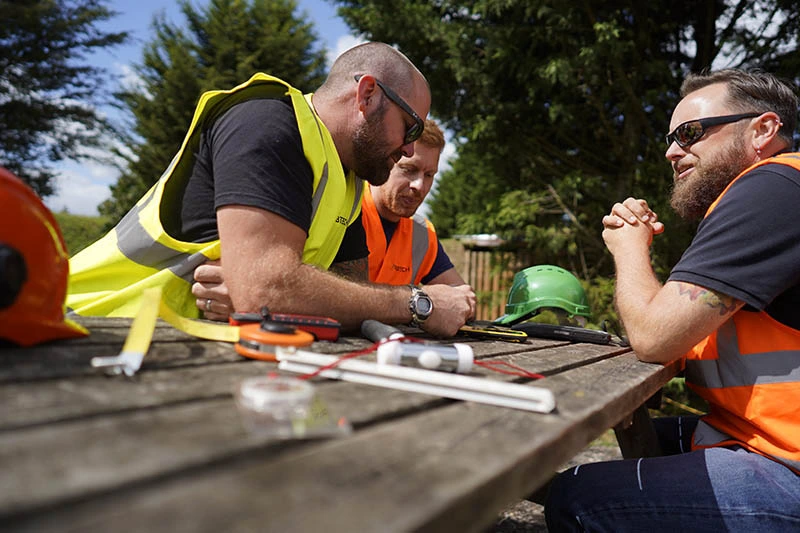
Habitat and Botanical Surveys
If you’re planning a new build or developing an existing structure or a plot of land, it is likely that you will face questions about the impact on ecology. Before you can get planning permission, the local council will need evidence on the effects of the project on any and all present plants and habitats.
For help with this, a botanical survey will let you know if there are any plant species on the development site and help you understand the habitat type you’re working with. By referring to vegetation surveys, development projects can move forward without harming the environment, breaking the law or suffering any avoidable delays.
What is a Botanical Survey?
A botanical survey or vegetation survey is a detailed inventory and classification of the ground flora on your land. It goes beyond a simple walkover to systematically record what’s growing, where it’s growing, and how important it is to the overall ecological value of the site.
It is often needed after an extended phase 1 habitat survey / preliminary ecological appraisal (PEA), and the main goal of an assessment is to confirm if there are any important habitats or rare plant species on your site. If there are, the botanical assessment will determine what impacts your planned development works might have on them and what needs to be done to mitigate them.
When Would You Need a Botanical Survey?
If an earlier PEA has identified that there is or even just could be a complex or high-value plant habitat on your development site, if you are required to determine the site’s conservation value or if a planning officer has asked for one, detailed botanical surveys will be needed.
Most commonly, botanic surveys will be expected on sites with old woodland, species-rich grassland and wetlands, or larger sites that are also subject to an environmental impact assessment (EIA). Landowners may also require a survey when applying for agri-environment schemes, such as Countryside Stewardship.
Protected flora are listed under Schedule 8 of the Wildlife and Countryside Act (1981) and Schedule 5 of the Conservation of Habitats and Species Regulations (2017). Some qualify as Species of Principal Importance under the National Environment and Rural Communities Act (2006), whilst many others are red-listed, nationally/county rare or scarce or experiencing nationwide declines.
Botanical Survey Methodology
In all of the botanical assessments we carry out, we follow the same set of proven and trusted methods. That way, we can guarantee that our reports are accurate, repeatable and accepted by the local planning authorities, regardless of what area we’re working in at the time.
The exact approach could vary from site to site, but whatever the location, we always follow the same set of scientific principles, parameters in the planning system and quality of work.
Botanical Survey Guidelines
All our surveys are conducted in line with best practice guidelines from key organisations, and we ensure that all of the work we undertake meets the standards required to meet legislative compliance.
Every type of report we produce is trusted by statutory bodies like the Chartered Institute of Ecology and Environmental Management (CIEEM) and Natural England / Natural Resources Wales, and our reports are informed by the data of relevant nature conservation groups like the Joint Nature Conservation Committee (JNCC), local Wildlife Trusts and the Woodland Trust.
By catering to the requirements and guidance of all corresponding regulators, we are able to support your planning application with the evidence that will be expected from you by the local planning authorities.
Steps in Botanical Habitat Surveys
Our step-by-step process consists of the following stages:
1. Desk Study
Reviewing existing data to build a picture of the local area’s history, soil types and local habitats and species composition to help us work out what we might find on your site.
Evidence worth researching includes historic maps, biological records and distance to nearby designated sites, such as sites of special scientific interest (SSSI).
2. Field Survey
Visiting your site to assess the different plant communities, one of our team of skilled FISC 4 botanists will use quadrats to record the species alongside each plant’s percentage cover scores.
Afterwards, the data will be run through powerful programmes to check it against leading industry classification guides.
3. Specialist Classification
For complex sites, including the National Vegetation Classification (NVC) in the assessment.
A full NVC survey is a highly scientific assessment and the standardised UK methodology for classifying certain habitats. It will match the habitat to specific NVC communities and utilise the predesigned NVC system to provide guidance, target notes and a highly scientific assessment.
4. Specific Assessments
If you need it, supporting your biodiversity net gain needs and general commitment to the protection of the natural environment by including a UKHabs and baseline habitat condition assessment in the assessment.
You might also need a hedgerow regulations survey or another type of assessment based on findings from your botanical survey. We are able to include any element of botanical survey you might need to achieve your planning goals.
Botanical Survey Report
At the end of all services we provide, a report will be created to explain the survey process, highlight the results and outline the steps you need to take to solve any issues that could otherwise get in the way of a successful application for planning consent.
In the case of a botanical survey report, the contents would include detailed descriptions and maps of all habitats and key species, an impact assessment based on the development plans, and clear recommendations for your next steps.
Advice moving forward could involve a comprehensive list of suitable management plans and management strategies for the site, such as plans for habitat restoration, protection or creation, habitat or species translocations, or instructions to monitor species long-term. Following the advice we provide, there should be no problem with getting planning acceptance.
Surveying Equipment for Botany
A full range of specialist equipment will be needed to complete a professional survey, such as:
- Field Guides
- GPS Mapping Software
- Hand Lens
- Quadrat
- Soil Auger
- Specimen Bags

Botanical Survey Services from Our Expert Botanists
For developers and planners, choosing the right ecological consultancy is crucial, as it could be the difference between a good and bad service and whether or not it’s possible to secure planning permission without further delays and additional cost.
Our team is so advanced that we can help you every step of the way, from a preliminary ecological appraisal (PEA) to a botanical survey, and from the presence of a single rare species to a relative abundance of protected plants. Based on the results of earlier surveys and the plant species on your site, we can then move on to other assessments, such as a national vegetation classification (NVC).
The experienced botanists at Arbtech give you a direct path through the planning process, finding any issues that could harm your chances of planning permission before delivering the solutions you need to comply with affected laws, conditions and guidelines.
Over the years, our team has helped countless developers with vegetation surveys, growing extensive experience in inspecting rare plant species, confirming habitat type, and working with a wide range of protected species.
Contact Our Team About a Botany Survey Quote
Even if you aren’t certain that you need habitat surveys for plant species, we would recommend speaking to our team. By reaching out directly to Arbtech, one of our administrators can assess your needs and point you in the right direction before sending you a quote for how much it will cost based on your development site.
All clients who speak to our team will receive a free quote. Simply fill out a contact form, call us or email us, and we will be happy to help you. If you’re comfortable progressing with us, we can guide you towards legislative compliance, arrange a detailed survey on your site, assemble management plans to support the present plant communities, and remove any obstacles that give the local council any reason to refuse planning consent.


